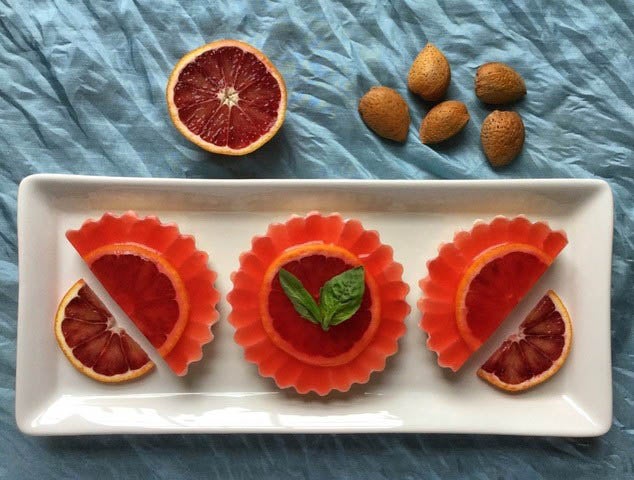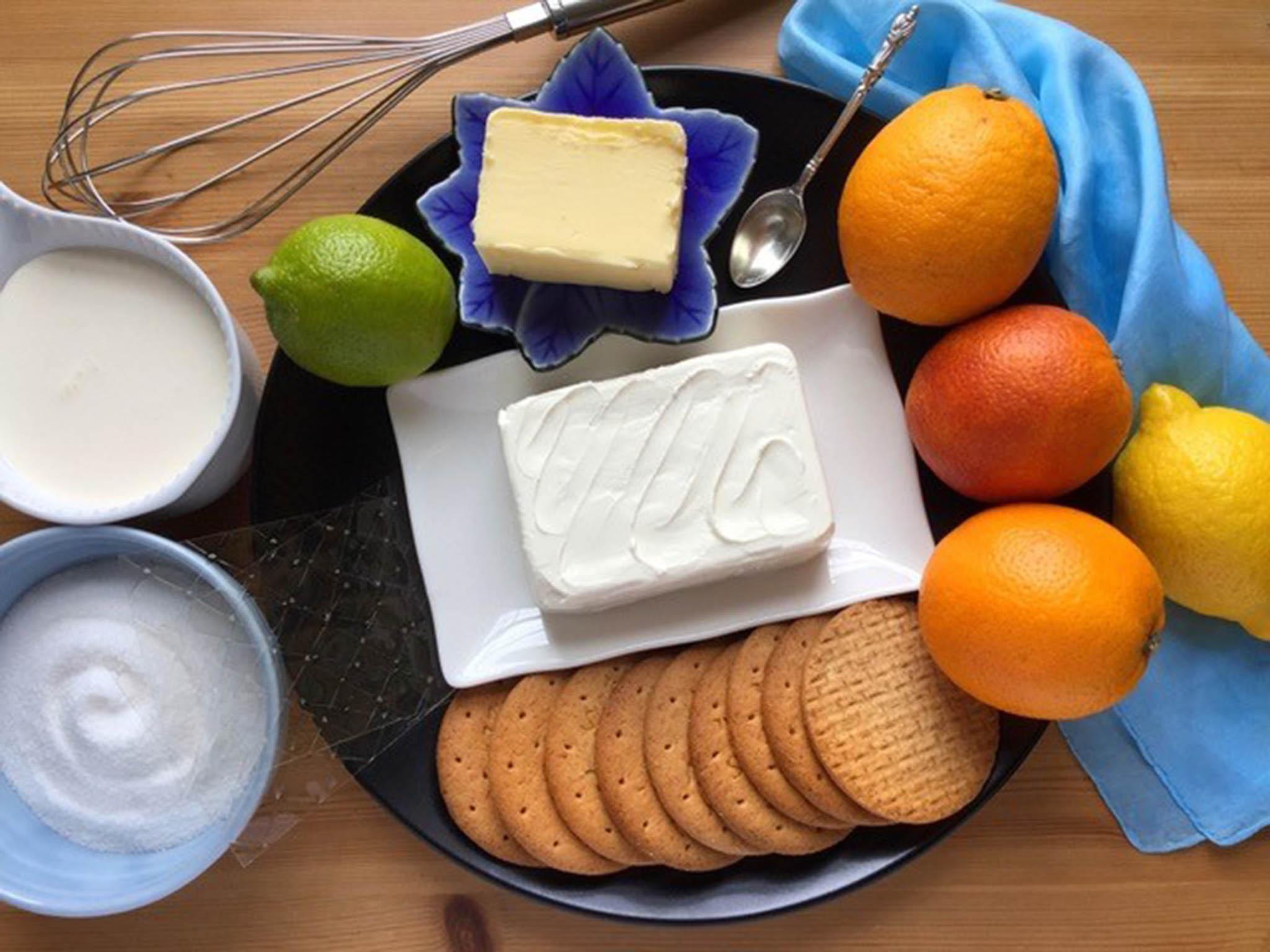How to make mini no-bake blood orange and almond cheesecakes
Beverley Hicks says now is the time to bring back colour to our food using these slightly tart and bold fruits, which are at their best – and sweetest – this month

Your support helps us to tell the story
From reproductive rights to climate change to Big Tech, The Independent is on the ground when the story is developing. Whether it's investigating the financials of Elon Musk's pro-Trump PAC or producing our latest documentary, 'The A Word', which shines a light on the American women fighting for reproductive rights, we know how important it is to parse out the facts from the messaging.
At such a critical moment in US history, we need reporters on the ground. Your donation allows us to keep sending journalists to speak to both sides of the story.
The Independent is trusted by Americans across the entire political spectrum. And unlike many other quality news outlets, we choose not to lock Americans out of our reporting and analysis with paywalls. We believe quality journalism should be available to everyone, paid for by those who can afford it.
Your support makes all the difference.It’s time to inject some colour into your life and into your diet! Blood oranges, with their crimson flesh and sweet rose-coloured juice, not only bring a blast of colour and flavour to your plate but also offer many health benefits.
Due to their sweet and slightly tart taste, blood oranges can be used in both savoury and sweet dishes.
They’re similar in taste, texture and look to regular oranges, although some may have a delicate blush to the skin, but the most startling difference is the vivid red stain to the flesh.
This colour is due to high levels of anthocyanins, a type of flavonoid with antioxidant effects. As well as fighting free radicals, anthocyanins may also have anti-inflammatory, anti-viral and anti-cancer benefits.
Unlike regular oranges, blood oranges are only available for a short period of time. In season from December to May (depending on the variety) they are at their best and sweetest during January and February.
The bitterness of the almond extract in the cheesecake filling ensures the blood orange jelly doesn’t overpower the cheesecake.
The biscuit base is purposely left plain so that the salt in the butter provides a perfect contrast to the overall sweetness of this creamy dessert.

Mini no-bake blood orange and almond cheesecakes
Serves 6
For the base:
150g digestive biscuits
75g salted butter, melted
For the filling:
Juice of a small lemon
200g cream cheese
1 teaspoon of almond extract
280ml double cream
75g caster sugar
For the blood orange jelly:
3 blood oranges
1 small lime
25g sugar
2 gelatine leaves
You will need:
6 x 10 cm loose bottomed tart cases
Blitz the digestive biscuits in a food processor. Add the melted butter and pulse until the mixture resembles wet sand. Divide between the loose-bottomed tart cases and push down to flatten. Cover and refrigerate for at least an hour to firm up.
To make the filling, put the lemon juice, cream cheese and almond extract into a large bowl and beat together. In a smaller bowl, whisk the double cream until slightly thickened. Add in the sugar and whisk until stiff. Fold into the cream cheese mixture then dollop into the chilled crusts. Smooth out the tops and return to the fridge to firm up, about 15 minutes.
To make the blood orange jelly, soak the gelatine leaves in a bowl of cold water for about 10 minutes. Meanwhile take nine paper thin slices from one of the oranges and juice the remaining oranges along with the lime. Pour the citrus juices into a small saucepan with the sugar and heat until just bubbling. Remove from the heat and leave for a few minutes to cool slightly. Squeeze the water from the gelatine leaves and add to the cooled juice, mix until completely dissolved. Cut the remaining orange slices in half and set aside.
Remove the cheesecakes from the fridge and place one orange slice on top of each. Spoon over the jelly, trying not to let it spill over the sides, and return the cheesecakes to the fridge to set, about 30 minutes.
When ready to serve, place one of the filled tart cases on top of a small upturned glass and gently work the sides down being careful not to break the crust. Remove the base with the point of a sharp knife and place the cheesecake on a small plate. Garnish with half a blood orange slice on the side.
Follow Beverley @littlechelseakitchen
Join our commenting forum
Join thought-provoking conversations, follow other Independent readers and see their replies
Comments